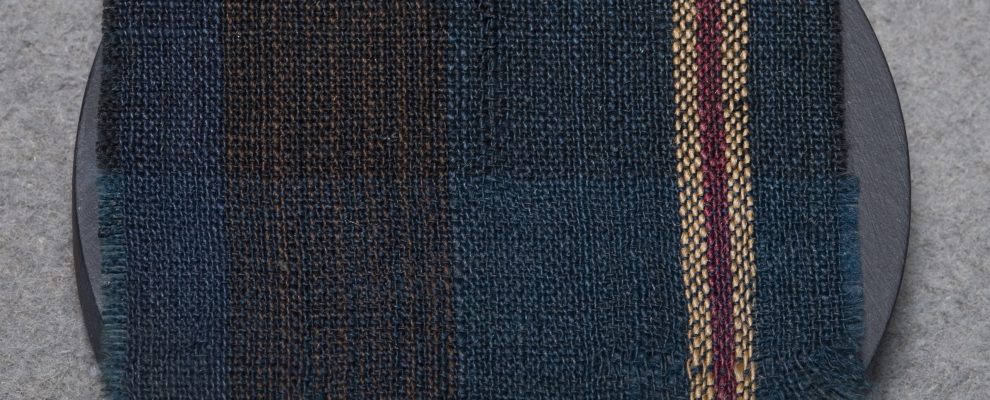… no man or boy, within that part of Great Britain called Scotland, other than shall be employed as Officers and Soldiers in His Majesty’s Forces, shall on any pretence whatsoever, wear or put on the clothes commonly called Highland Clothes (that is to say) the Plaid, Philabeg, or little Kilt, Trowse, Shoulder belts, or any part whatsoever of what peculiarly belongs to the Highland Garb …
Following the crushing defeat of armed Jacobitism at the Battle of Culloden on 16 April 1746, the British Government sought to strengthen its control of the Highlands of Scotland through both military occupation and legal measures. The 1746 Act of Proscription was one such measure and was intended effectively to ban the wearing of Highland dress, particularly exemplified in ‘Plaid’ or tartan. The authorities were keenly aware of the potency of tartan as an expression of Scottish Highland identity. Its complex patterns and colour combinations conveyed a powerful sense of clan loyalties, allegiance to the Scottish Stuart royal line and commitment to the Jacobite cause. Yet this legislation, which punished those caught wearing tartan with penalties of imprisonment and transportation, also imbued tartan with a frisson of danger and intrigue, deepening the air of romanticism that surrounded it and strengthening the role of tartan as a signifier of resistance.
Even among English Jacobites, far from the Highlands, tartan was adopted as an expression of allegiance to the cause of the House of Stuart. Its striking and colourful designs made tartan a powerful and symbolic presence in art, particularly in portraiture, where a sitter might choose to be painted wearing tartan to proclaim (and, somewhat dangerously, permanently record) his or her Jacobite sympathies. Perhaps the clearest confirmation of tartan’s status as a Jacobite symbol is that both sides of the conflict made use of it as a visual shorthand for Jacobitism, with ‘tartan’-clad figures present in both pro- and anti-Jacobite imagery. Prince Charles Edward Stuart was rarely depicted without this symbolic garb, and although the tartan was often loosely depicted and had no recognisable pattern it served to make his figure clearly and instantly identifiable in a way that required no words.
The celebrated story of Prince Charles’s escape from Scotland to France via the islands of Benbecula and Scalpay in a suit of tartan cloth purportedly given to him after Culloden served to strengthen the romantic and heroic associations of the fabric. Fragments of cloth supposedly from this suit subsequently became relics of the Prince and the lost Jacobite cause: while far too numerous and varied in pattern to have come from just one suit of clothes they nevertheless contributed to the fashioning of tartan into a material memorialisation of Jacobite romance and resistance.
Such was the power of tartan that the legislation prohibiting it was not repealed until 1782, when Jacobite claims to the throne had ceased to pose any serious threat.

Source: In the Name of the Rose: The Jacobite Rebellions, Symbolism and Allegiance (Fairfax House, 2013)
